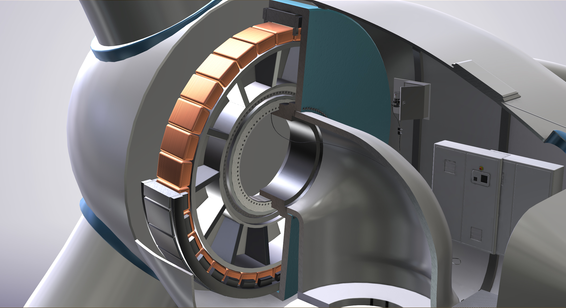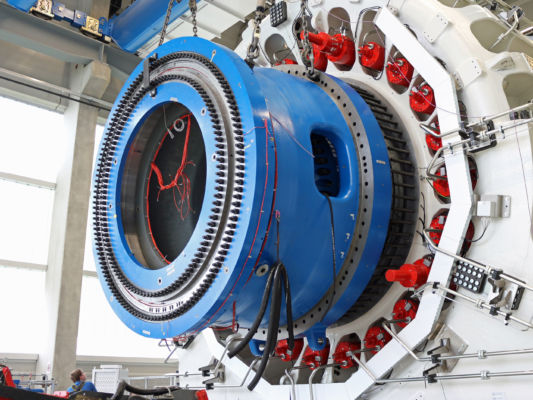Wind turbine main shaft bearings face challenging conditions. The control system and continuous changes of air flow subject bearings to variable loads. Within the nacelle, bearings must support the rotor weight and accommodate varying axial loads caused by wind to enable the moving parts to rotate smoothly. Rotation speed is usually low – sometimes less than 10 rpm. Therefore, wind turbines require bearing arrangements that are up to the task of reliably handling these requirements.
Different bearings arrangements and their benefits
All wind turbines are different and support varying loads. This means that there is no one-size-fits-all solution. Many factors influence which bearing arrangement is most suitable – including the amount of space inside the nacelle, gearbox configuration, and the individual operating regime. So, what are the different types of bearing arrangements and what do they offer?
Most large-size wind turbines utilize at least two different bearings between the main shaft and the generator. These are called the locating and non-locating bearing. A locating bearing handles both axial and radial loads. A non-locating bearing supports only radial loads. Cross-locating tapered roller bearings are now also becoming more prominent to support the main shaft.
Flexible vs. rigid design
Some turbines use flexible design practices for bearings in different roles. In this instance, double-row spherical roller bearings are utilized in the locating and non-locating positions. This setup can accommodate shaft misalignment without resulting in parasitic loads from shaft deflection. from SKF can also be used with spherical roller bearings in this type of arrangement to handle axial deflection and misalignment. Simply put, the flexible approach is beneficial for mitigating shaft misalignment.
The alternative to a flexible arrangement is a rigid one. Tapered roller bearings are deployed in the locating position. This setup offers the benefit of coping well with extremely high axial loads typical in larger wind turbine designs. However, the bearings must operate with a set preload and require complex and precise assembly to be able to manage the more extreme conditions.
It often comes down to personal preference
Debate is currently still ongoing about the benefits and merits of different bearing arrangements. Despite this, analysis of field data and testing show that all modern configurations operate reliably. Different setups are not typically considered a factor that affects reliability. Instead, wind turbine manufacturers decide which one they are more comfortable working with – which sometimes comes down to familiarity or experience of their technicians. SKF is also continuously investing in research and development for bearing arrangements at the Sven Wingqvist Test Center in Schweinfurt, Germany. The goal is to support wind energy companies with advanced configurations for bearings.



